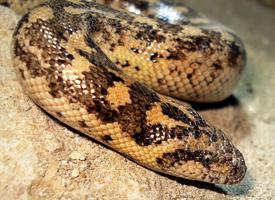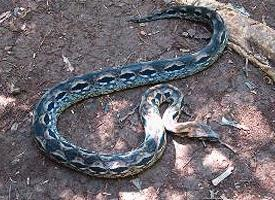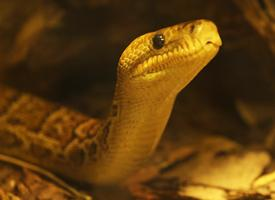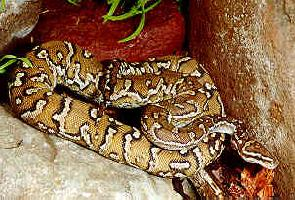
Váhy a míry
| Délka | od 50 do 80 cm |
|---|
Popis zvířete
The Javelin sand boa (Eryx jaculus) is a fascinating and unique species of snake that belongs to the Boidae family, which is known for its non-venomous constrictor species. This particular species is native to a wide range of habitats, including southeastern Europe, the Middle East, and parts of North Africa. Its distinctive characteristics and behaviors make it a subject of interest among herpetologists and reptile enthusiasts alike.One of the most striking features of the Javelin sand boa is its robust and cylindrical body, which is well-adapted for a life spent mostly under the sand. The snake's length typically ranges from 30 to 80 centimeters, with females generally being larger than males. The skin of the Javelin sand boa is covered in small, smooth scales that exhibit a variety of colors and patterns, primarily shades of brown, tan, and yellow, which serve as excellent camouflage against the sandy and rocky environments it inhabits.
The head of the Javelin sand boa is small and somewhat flattened, with a blunt snout that is highly specialized for burrowing. Its eyes are small with vertical pupils, an adaptation that likely helps protect its vision from the abrasive sand. The snake's nostrils are positioned on top of its snout, enabling it to breathe while submerged in sand.
As a fossorial species, the Javelin sand boa spends much of its life hidden beneath the surface of the sand, emerging primarily at night or during the cooler hours of the day to hunt. Its diet mainly consists of small mammals, such as rodents, as well as birds and their eggs, which it captures using its powerful constriction technique. Despite its formidable hunting strategy, the Javelin sand boa is a slow-moving snake and relies heavily on the element of surprise to catch its prey.
Reproduction in the Javelin sand boa is ovoviviparous, meaning the females give birth to live young rather than laying eggs. Mating typically occurs in the spring, and after a gestation period of several months, the female gives birth to a litter of anywhere from 3 to 20 young. These juvenile snakes are independent from birth and receive no parental care, quickly learning to fend for themselves in their harsh desert environment.
In terms of conservation status, the Javelin sand boa is not currently considered to be at significant risk. However, like many reptile species, it faces threats from habitat destruction, pollution, and illegal collection for the pet trade. Conservation efforts are necessary to ensure the long-term survival of this unique species and the preservation of its natural habitats.
Overall, the Javelin sand boa is a remarkable example of adaptation and survival in some of the most challenging environments on Earth. Its specialized body structure, hunting techniques, and reproductive strategies make it a fascinating subject for study and an important part of the ecosystems it inhabits.
Podobná zvířata
Nové fotografie zvířat
Top 10 zvířat
- Chinese water dragon (Physignathus cocincinus)
- Galápagos tortoise (Geochelone nigra complex)
- Dolphin gull (Leucophaeus scoresbii)
- Japanese macaque (Macaca fuscata)
- Colombian red howler (Alouatta seniculus)
- Sea urchins (Echinoidea)
- Diana monkey (Cercopithecus diana)
- Moustached guenon (Cercopithecus cephus)
- Colossal squid (Mesonychoteuthis hamiltoni)
- Common reed warbler (Acrocephalus scirpaceus)


